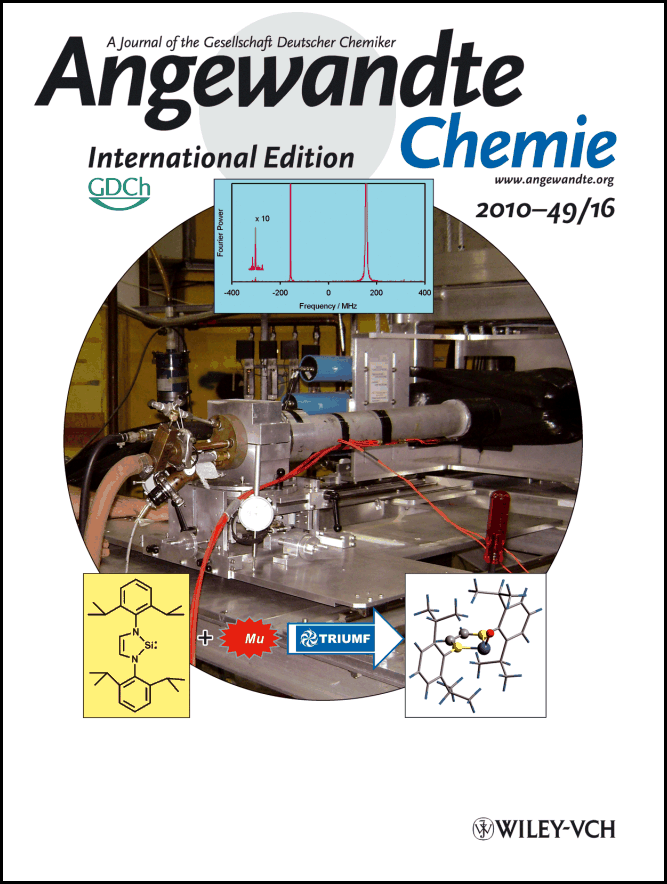| |||
This important paper was selected to feature as the inside cover story in Angewandte Chemie, a prestigious journal published by the German Chemical Society. |
A recent paper entitled “A Silyl Radical formed by Muonium Addition to a Silylene” published in Angewandte Chemie, a prestigious journal by the German Chemical Society, describes landmark results on the subject of new and exciting organosilicon chemistry that was possible because two highly specialized expert groups — one in chemistry, led by Bob West at the University of Wisconsin and the other in muon spin spectroscopy, led by Paul Percival at SFU/TRIUMF, pooled their talents to apply muon spectroscopy to the problem.
For the experiment, West brought together expertise from physics and chemistry to investigate silyl radicals. The journal article showcases an example of how collaborative efforts, which draw experts from contrasting areas of study, are important and contribute to innovation. Using the positive muon beam at TRIUMF and expert knowledge at the Organosilicon Research Centre, a primary radical adduct between silylene and muonium was detected for the first time.
The research was prompted because of a discrepancy observed between the experimental results and the theoretical predictions which used density-functional theory (DFT). The muon hyperfine coupling constant (hfc) for a muoniated radical can be estimated by calculating the proton hfc of an isotopomeric radical where the hydrogen atom has been replaced by a substituent, such as carbene or silylene. This procedure has proven accurate when tested with muonium adducts of stable carbene. However, when the silylene molecule was tested, measurements of the hfc were far lower than predicted by the DFT calculations. After conducting the study, West announced the research will continue with further investigation to study the effects of various substituents.
In recent years, there has been an increase of interest surrounding the chemistry of stable silylene. Studying stable silylenes may provide insights into chemical bonding of silicon. “We anticipate that many of these new silylenes will also display useful and interesting muonium chemistry.”
TRIUMF is one of only four research centres in the world that provides the intense beams of spin-polarized muons that are necessary for muon spectroscopy and spin-relaxation studies. These capabilities when combined with the research strengths at the Organosilicon Research Centre in Wisconsin provide unique opportunities for breakthroughs. "Muon spin resonance experiments at TRIUMF,” says Bob West, “In just two years, have unlocked hidden secrets of organosilicon chemistry."
Contributing members include Amitabha Mitra (UWisconsin), Jean-Claude Brodovitch (SFU), Clemens Krempner (University of Rostock), Paul W. Percival (SFU/TRIUMF), Pooja Vyas (TRIUMF), and Robert West (UWisconsin).
— Melissa Baluk, Communications Assistant

